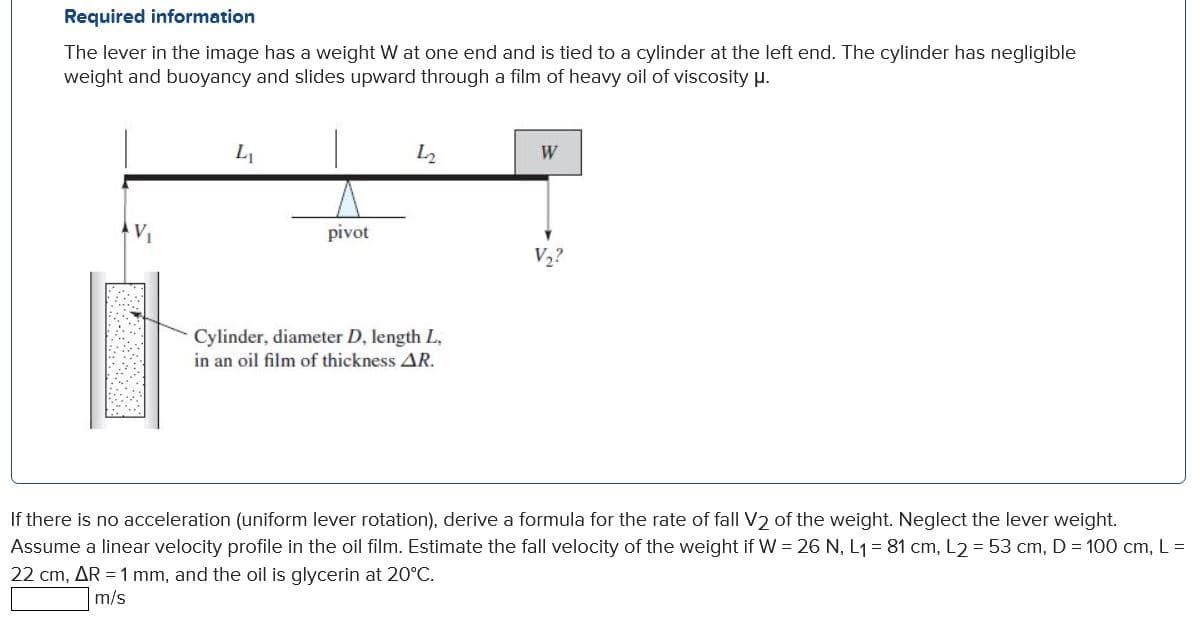The lever in the image has a weight W at one end and is tied to a cylinder at the left end. The cylinder has negligible weight and buoyancy and slides upward through a film of heavy oil of viscosity u.
The lever in the image has a weight W at one end and is tied to a cylinder at the left end. The cylinder has negligible weight and buoyancy and slides upward through a film of heavy oil of viscosity u.
Principles of Heat Transfer (Activate Learning with these NEW titles from Engineering!)
8th Edition
ISBN:9781305387102
Author:Kreith, Frank; Manglik, Raj M.
Publisher:Kreith, Frank; Manglik, Raj M.
Chapter5: Analysis Of Convection Heat Transfer
Section: Chapter Questions
Problem 5.5P: Evaluate the dimensionless groups hcD/k,UD/, and cp/k for water, n-butyl alcohol, mercury, hydrogen,...
Related questions
Question
Need help with this engineering problem.

Transcribed Image Text:Required information
The lever in the image has a weight W at one end and is tied to a cylinder at the left end. The cylinder has negligible
weight and buoyancy and slides upward through a film of heavy oil of viscosity u.
L2
W
pivot
V2?
Cylinder, diameter D, length L,
in an oil film of thickness AR.
If there is no acceleration (uniform lever rotation), derive a formula for the rate of fall V2 of the weight. Neglect the lever weight.
Assume a linear velocity profile in the oil film. Estimate the fall velocity of the weight if W = 26 N, L1= 81 cm, L2 = 53 cm, D = 100 cm, L =
22 cm, AR = 1 mm, and the oil is glycerin at 20°C.
m/s
Expert Solution
This question has been solved!
Explore an expertly crafted, step-by-step solution for a thorough understanding of key concepts.
This is a popular solution!
Trending now
This is a popular solution!
Step by step
Solved in 2 steps with 2 images

Knowledge Booster
Learn more about
Need a deep-dive on the concept behind this application? Look no further. Learn more about this topic, mechanical-engineering and related others by exploring similar questions and additional content below.Recommended textbooks for you

Principles of Heat Transfer (Activate Learning wi…
Mechanical Engineering
ISBN:
9781305387102
Author:
Kreith, Frank; Manglik, Raj M.
Publisher:
Cengage Learning

Principles of Heat Transfer (Activate Learning wi…
Mechanical Engineering
ISBN:
9781305387102
Author:
Kreith, Frank; Manglik, Raj M.
Publisher:
Cengage Learning